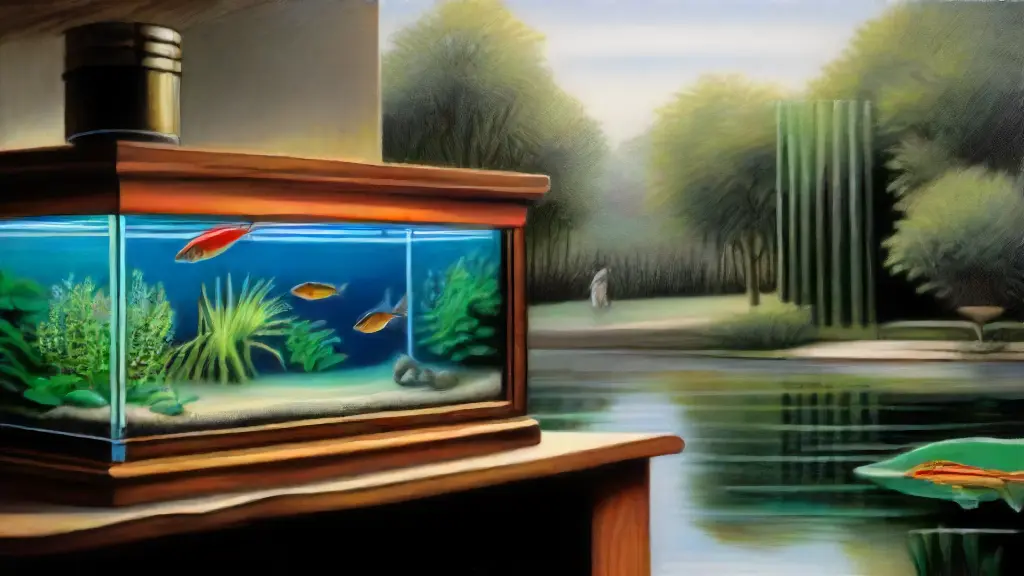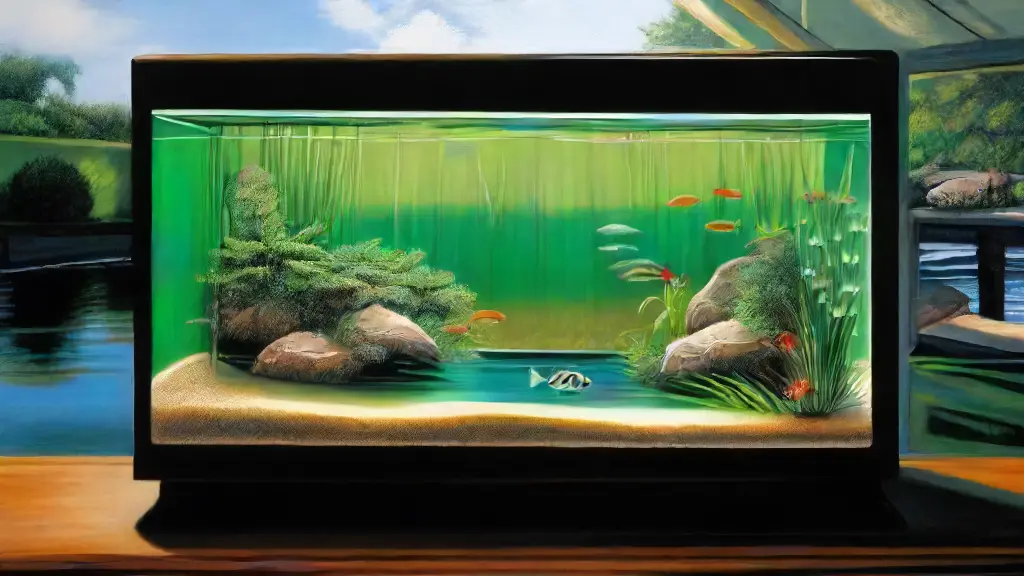Best Containers for Breeding Minnows

When it comes to creating a thriving freshwater ecosystem, choosing the right habitat is crucial. A carefully selected environment can mean the difference between a successful breeding experience and a disappointing outcome.
This is particularly true when breeding minnows, as these small fish are sensitive to their surroundings and require precise conditions to thrive.
Why the Right Container Matters
Breeding minnows requires a clever choice of aquarium containers that provide the perfect setting for these small fish to flourish.
The right container is essential for maintaining water quality, promoting healthy growth, and ensuring a successful breeding experience.
Key Considerations for Choosing the Best Container
When selecting a container for breeding minnows in a freshwater ecosystem, it is crucial to consider factors such as the size and shape of the container, the type of aquarium gravel or pebbles used for the habitat, and the overall environment that will be created for the fish and other aquatic life.
What Is Breeding Habitat Environment Like
When it comes to aquatic animals, the environment in which they breed can make all the difference between success and failure. The time and effort invested in creating the perfect breeding habitat can pay off with a thriving brood.
The breeding habitat environment for aquatic animals plays a crucial role in ensuring the success of their reproduction, and it’s essential to create an environment that simulates their natural habitat as closely as possible.
This can be achieved by providing a suitable foundation, like gravel, that allows for easy digging and hiding.
Consistent water quality is vital for breeding, and this can be maintained by using a high-quality filter that produces both oxygen-rich and aerated water. The ideal water temperature for breeding varies depending on the species, but a general temperature range of 72 to 82°F is suitable for most aquarium fish. Aquatic plants are also an important aspect of maintaining a healthy and thriving aquarium, requiring a proper gravel substrate, filtered and aerated water, adequate oxygen quality, and regular maintenance and care.

What Do Minnows Need In Container Setup
Minnows are a delight to observe, with their vibrant colors and intricate behaviors. To create a thriving environment for these fascinating creatures, it’s essential to understand their specific needs.
Habitat Construction
——————-
Provide a suitable substrate, such as sand or gravel, to mimic their natural environment.
Adding plants can also enhance shelter and visual interest for your minnows.
Ensure proper filtration and circulation to maintain clean and oxygen-rich water.
Minnows are sensitive to water conditions and require a specific range of parameters to thrive.
Water Conditions
—————-
Set water temperature between 65-78°F (18-26°C) to ensure optimal growth. Maintain a pH level between 5-5, as minnows are sensitive to extreme acidity or alkalinity.
Minnow Care Facts
- Minnows require a specific range of water parameters to thrive.
- Proper filtration and circulation are essential to maintain clean and oxygen-rich water.
- Minnows are sensitive to extreme acidity or alkalinity, with a recommended pH level of 5-
- Minnows require a water temperature between 65-78°F (18-26°C) for optimal growth.
Can Breeding Containers Be Filtered
Aquaculture breeders have long emphasized the importance of a secure foundation for their fish, where every variable is carefully controlled to promote optimal health. Proper water parameters being a crucial component of this process.
The purpose of breeding containers in aquaculture is to provide a controlled environment for fish to thrive, and reduce stress and mortality rates.
Effective regulation of conditions is essential to maintain optimal parameters, as it helps to govern water pH, hardness, and alkalinity.
Water changes, circulation, and aeration also play a vital role in maintaining quality, which is critical for fish health and breeding success.
Careful consideration is given to hiding suitable hiding places and ensuring sufficient shelter for fish to feel secure in their environment.
By striking the perfect balance between these factors, breeders can minimize stress and maximize the chances of successful breeding.
Why Is Pebbles Gravel Substrate Important
Aquarium enthusiasts know that creating a thriving ecosystem requires a delicate balance between water quality and habitat stability. The right substrate is essential to achieving this harmony, and pebbles gravel substrates are a crucial component.
The pebbles gravel substrate, in particular, is a cornerstone of a healthy aquatic environment, providing a durable foundation for plants and animals alike.
Physical and Chemical Properties:
Pebbles gravel substrate boasts excellent water circulation, allowing for efficient exchange of gases and removal of waste products, making it a safe haven for aquatic life.
The rocks beneath the surface also provide a secure footing for plants to anchor themselves.
Its chemical properties also play a vital role in maintaining a stable pH and temperature, creating a sheltered environment for fish and other aquatic organisms to thrive. In addition, the aquarium provides a secure and escapeproof shelter with durable acrylic walls, easy cleaning, and safe access to rocks and caves, making it a safe haven for aquatic animals amidst the plastic and glass debris often found in the ocean.
Facts About Pebbles Gravel Substrate
- Pebbles gravel substrate provides excellent water circulation for efficient exchange of gases and removal of waste products.
- The rocks beneath the surface of the pebbles gravel substrate provide a secure footing for plants to anchor themselves.
- Pebbles gravel substrate helps maintain a stable pH and temperature, creating a sheltered environment for fish and other aquatic organisms.
- The durable acrylic walls of the aquarium provide a secure and escapeproof shelter for aquatic animals.
How Can Aquarium Supplies Enhance Environment
Creating a thriving aquarium ecosystem requires a delicate balance of factors, with the right supplies playing a crucial role in maintaining optimal conditions. Adjustable water parameters, such as pH levels, play a vital part in sustaining fish health, and a well-chosen range of aquarium equipment can significantly impact these conditions.
Aquarium conditions, including pH levels, water temperature, and water hardness, can have a profound effect on aquatic life.
A slight deviation in these parameters can lead to stress, disease, and even mortality in fish.
Detachable filtration systems, compact heating and cooling units, and modular aeration and oxygenation systems are just a few examples of the equipment available to aquarists. These supplies not only enhance the environment but also simplify maintenance and management tasks, making it easier to provide a stable and buoyant habitat for aquatic creatures. Regular water changes, monitoring and adjustments enabled by the adjustable, detachable, removable, modular, scalable, compact, portable, transportable, easy transport, and easy relocation features, providing stability and buoyancy to the system.
What Is Best Container Water Volume Size
Aquatic enthusiasts often underestimate the significance of water volume in their aquariums, neglecting the delicate balance that it maintains. As a result, many aquariums fall short of providing a healthy and thriving environment for their inhabitants.
Defining Water Volume Requirements for Aquatic Life
For instance, breeding fish require a certain level of water volume to accommodate their growth and movement, with visibility into the water height being a crucial factor.
Fish that are unable to fully submerge themselves may exhibit abnormal behavior, such as frequent floating or sinking.
Calculating Water Volume Needs for Optimal Fish Health
The level of water depth can affect the overall water quality, as it determines the volume of water parameter fluctuations. Monitoring water levels and adjusting the water depth can be crucial to ensure clear visibility and prevent submergence or sinking of objects.
Aquarium Water Volume
- Water volume affects the ability of fish to fully submerge themselves, with inadequate volume leading to abnormal behavior.
- A minimum water volume of 1 gallon per inch of fish is recommended for optimal fish health and movement.
- Water depth can affect water quality, with changes in depth causing fluctuations in water parameters.
- Regular monitoring and adjustment of water levels and depth is crucial to maintain a healthy and thriving aquatic environment.
Can Breeding Containers Be Portable Durable
Aquarium enthusiasts have long grappled with the challenge of creating a harmonious environment that fosters the growth and reproduction of aquatic life. As scientists unravel the intricacies of fish biology, breeders are now poised to harness cutting-edge technology and innovative design principles to revolutionize the way they care for their finned friends.
Defining the Problem: Inadequate Solutions in Fish Breeding
Traditional aquariums often struggle to provide the ideal environment for fish breeding, with inadequate space, poor air circulation, and limited control over water temperature and chemistry. The aquarium may be able to replicate a natural day-night cycle by incorporating UV and infrared lights, along with heat and cold sources, and monitoring the climate with a thermometer and hydrometer to ensure the optimal photoperiod.
Is Artificial Lighting Important For Breeding
As aquarium owners, we often focus on the right water chemistry and healthy aquatic plants, but a crucial aspect of breeding success is often overlooked – artificial lighting. In many respects, it’s the unsung hero of aquarium maintenance, playing a vital role in the delicate balance of our underwater worlds.
For enthusiasts, artificial lighting is a vital component of maintaining optimal water chemistry and promoting healthy aquatic plants.
But did you know that the right lighting can also significantly impact the breeding process?
When it comes to breeding, pH meters and water test kits are essential tools for ensuring the perfect balance of water parameters.
But what about lighting? The wrong spectrum or intensity can hinder breeding success, while the right lighting can boost growth rates and enhance coloration. As those who’ve spent countless hours perfecting their aquarium supplies and equipment, I’ve seen firsthand the benefits of artificial plants growing in water with stable pH levels, as monitored by my trusty pH meter and tested regularly with my reliable test kit.
Artificial Lighting for Aquarium Breeding
- Artificial lighting can significantly impact the breeding process, with the wrong spectrum or intensity hindering breeding success and the right lighting boosting growth rates and enhancing coloration.
- Proper lighting can help maintain optimal water chemistry, which is essential for promoting healthy aquatic plants and breeding success.
- A stable pH level, monitored by a pH meter and tested regularly with a reliable test kit, is crucial for breeding success and can be achieved with the right artificial lighting.
- Artificial lighting can also enhance the coloration of aquatic plants, making them more vibrant and healthy-looking.
How to Maintain a Worm Farm for Fishing Bait
How to Raise Insects for Fishing Bait


